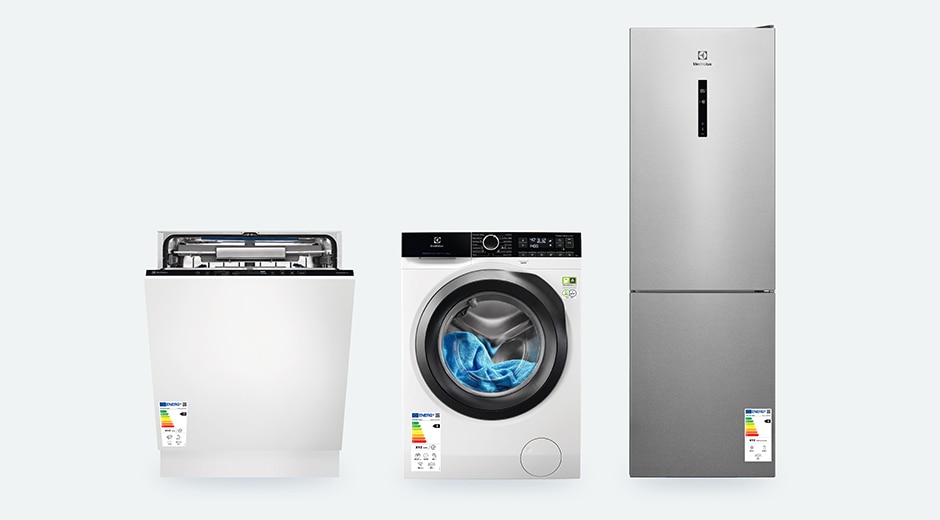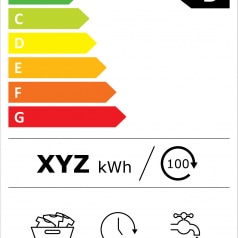8 in 10 consumers in Europe recognize the current EU Energy Label and consult it when buying home appliances. Thanks to the supply and demand of energy saving products, energy consumption and energy costs of appliances have drastically been reduced. Today, the majority of products are already in the 2-3 top classes. At the same time, this makes it more difficult for consumers to distinguish the most efficient products.
Since the EU energy label (E-label) was introduced twenty years ago, consumers have relied on it when buying home appliances. However, as companies have improved the energy and water efficiency of their products, today almost all appliances are ranked in the former top three energy classes (A+, A++, A+++) so A+ is currently the least efficient label.
From 1st March 2021, a new EU Energy Label will be introduced for washing machines, washer driers, dish washers and cooling appliances sold in Europe. The E-label is designed to help consumers differentiate better between more technologically advanced home appliances. It is important to underline that even if the rating on the new E-label will be different, the energy consumption of an appliance stays the same.
There has been a transition period from 1st November 2020 until today to facilitate the transition from the old to the new E-label. During this time period all appliances have been supplied with double labels.
“As a global leader in sustainability, Electrolux wants to help consumers to save resources every day. We’re creating outstanding, sustainable consumer experiences that go beyond simply choosing an appliance based on the E-label. As the new scale may initially be confusing it is very important for us to ease the understanding of the new label logic among consumers”, says Viktor Sundberg, VP European & Environmental Affairs.
The new Energy Label comes with some changes:
- The EU legislators have decided to rescale the current label from A to G, thereby removing the classes A+ to A+++.
- A major downgrade in the energy classes is expected, as well as stricter performance requirements.
- A product showing an A+++ energy efficiency class may, for example, become a D or E class after rescaling, without any significant change in its energy consumption.
- The most efficient class (class A) will initially be left empty to leave room for progress in future-developed appliances.
- The new label reflects new performance items, stricter eco-design requirements and a new testing methodology.
- A QR code has been added to the new label for more information on the product (through the EU product database EPREL)
- New energy labels for tumble dryers, ovens, hoods, and air-conditioners will be implemented in a few years’ time.



